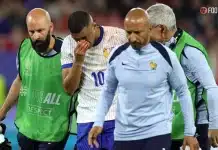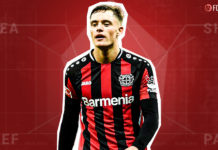
Two of Spain’s biggest football clubs, Real Madrid and Atletico Madrid, will be banned from registering players for the next two transfer windows after breaching rules that regulate the transfer of under-18s. While such punishment is a welcome sign that FIFA takes the welfare of children seriously, its current scattergun approach to punishing clubs who transgress the rules is clearly not working.
The two Spanish clubs are accused of breaching a FIFA regulation that prohibits the international transfer of players under the age of 18. There are some exceptions, including that transfers between two clubs in Europe can take place from the age of 16, and when a young player’s parents move to the country in which the club is based for reasons unrelated to football.
Following investigations by FIFA, football’s governing body said it had found irregularities in the registration of underage players fielded by Real and Atletico, and imposed the transfer bans for all players as well as fines. Both clubs plan to appeal the sanctions.
When FIFA handed down a similar ban to FC Barcelona in 2014, it was clear that it viewed the moving of a child across an international border for the purposes of playing the game to be contrary to the child’s best interests.
Clubs that uncover the next superstar from abroad and secure their services for minimal cost have a lot to gain both commercially and in sporting success. But transfers can have a potentially damaging impact on a child’s well-being, development and enjoyment of family life.
In 2009, the then-UEFA president, Michel Platini, described the uprooting of a child from their home country and paying them to play football in Europe as a form of child trafficking. But many within football (including Arsenal manager Arsene Wenger) were vociferous in their defence of the child welfare practices of major European football clubs.
OPPORTUNITY COST
It is true that the academies of clubs such as Barcelona, Real Madrid and Atletico Madrid (as well as many within the UK) have excellent reputations for nurturing their players. They place a high value on educational opportunity and personal development, as well as offering elite football training.
But FIFA does not see providing a young player with the bells and whistles experience of an elite football academy as a defence to a violation of its regulations. This defence was unsuccessfully argued by Barcelona in its challenge to the 2014 sanction.
There is also a murky side to the recruitment of young footballers from abroad. Significant evidence exists of “trafficking” networks operating in developing regions of the world, exploiting the dreams of young boys from very poor backgrounds to become professional footballers. Rogue agents promise trials at major European clubs for a fee paid by the player’s family, which often never materialises.
Players who do travel to Europe, often on false documents, have found themselves abandoned following an unsuccessful or nonexistent trial, with no formal immigration status and no way of returning home. Last year, the International Centre for Sports Security told The Telegraph it has heard estimates that there are up to 15,000 trafficked players in Europe.

ARE OUTRIGHT BANS THE ANSWER?
The bans imposed on Atletico and Real – for the two transfer windows in July-August 2016 and January 2017 – seem to be a concerted effort by FIFA to target transgressions by major European clubs. Up until relatively recently, cases had focused on smaller clubs. The Danish club, FC Midtjylland, complained to the Court of Arbitration for Sport in 2009 that it was being made a scapegoat for practices in relation to young foreign players that were known to be deployed by Europe’s elite clubs.
But we cannot assume that an outright prohibition on the international recruitment of young players is the most effective way of protecting the welfare of child footballers. The ban on under-age transfers has been in place since 2002, yet a buoyant international trade in young footballers still exists. So questions remain about how effective it is.
The potential benefits of a successful career in football for a child from a developing region of the world whose educational and professional opportunities are limited should not be forgotten. There is a fine balance to be struck between protecting a child’s welfare, and denying them the opportunity to train at an elite football academy. This could give them the chance of enjoying a highly lucrative career playing a sport they love – and bring positive effects on their health and educational opportunities.
Instead of imposing an outright ban on international transfers of minors, FIFA’s efforts might well be better targeted at what happens when they do take place. Regulations should ensure that transfers happen with the maximum regard for the child’s right to access education and the highest possible standards of healthcare, and to maintain close contact with their parents. Alongside robust sanctions against rogue agents who effectively operate as people traffickers, this approach might well prove a more effective tool in safeguarding the welfare of young players.
A new approach is needed: the current sanctioning of European clubs for violations of FIFA’s regulations has not proven to be an effective way of addressing the more insidious side of the recruitment of young foreign players.



